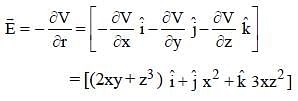Test: Electric Potential and Capacitance (November 23) - NEET MCQ
15 Questions MCQ Test - Test: Electric Potential and Capacitance (November 23)
The four capacitors, each of 25μ F are connected as shown in fig. The dc voltmeter reads 200 V. The charge on each plate of capacitor is [1994]


A parallel plate condenser with oil between the plates (dielectric constant of oil K = 2) has a capacitance C. If the oil is removed, then capacitance of the capacitor becomes
| 1 Crore+ students have signed up on EduRev. Have you? Download the App |
A capacitor is charged to store an energy U.The charging battery is disconnected. Anidentical capacitor is now connected to the firstcapacitor in parallel. The energy in each of thecapacitor is [2000]
The capacity of a parallel plate condenser is 10μF when the distance between its plates is 8cm. If the distance between the plates is reducedto 4 cm then the capacity of this parallel platecondenser will be [2001]
A capacitor C1 is charged to a potential difference V. The charging battery is then removed and the capacitor is connected to an uncharged capacitor C2. The potential difference across the combination is

Each corner of a cube of side l has a negative charge, –q. The electrostatic potential energy of a charge q at the centre of the cube is [2002]
Three capacitors each of capacity 4μF are to be connected in such a way that the effective capacitance is 6 μF. This can be done by [2003]
As per the diagram, a point charge +q is placed at the origin O. Work done in taking another point charge –Q from the point A [coordinates (0, a)] to another point B [coordinates (a, 0)] along the straight path AB is:

Two charges q1 and q2 are placed 30 cm apart, as shown in the figure. A third charge q3 is moved along the arc of a circle of radius 40 cm from C to D. The change in the potential energy of the system is  where k is
where k is

A parallel plate air capacitor is charged to apotential difference of V volts. After disconnecting the charging battery the distance between the plates of the capacitor is increased using an insulating handle. As a result the potential difference between the plates [2006]
Two condensers, one of capacity C and other of capacity C/2 are connected to a V-volt battery, as shown. [2007]

The work done in charging fully both the condensers is
The energy required to charge a parallel plate condenser of plate separation d and plate area of cross-section A such that the uniform electric field between the plates is E, is [2008]
Three capacitors each of capacitance C and of breakdown voltage V are joined in series. The capacitance and breakdown voltage of the combination will be [2009]
The electric potential at a point (x, y, z) is given by V = – x2y – xz3 + 4. The electric field  at that point is [2009]
at that point is [2009]
A condenser of capacity C is charged to a potential difference of V1. The plates of the condenser are then connected to an ideal inductor of inductance L. The current through the inductor when the potential difference across the condenser reduces to V2 is


 CV =
CV = 
 ... (2)
... (2)

















 and V = E.d
and V = E.d




 and V = V1 cosωt
and V = V1 cosωt (–ve sign gives direction)
(–ve sign gives direction)















